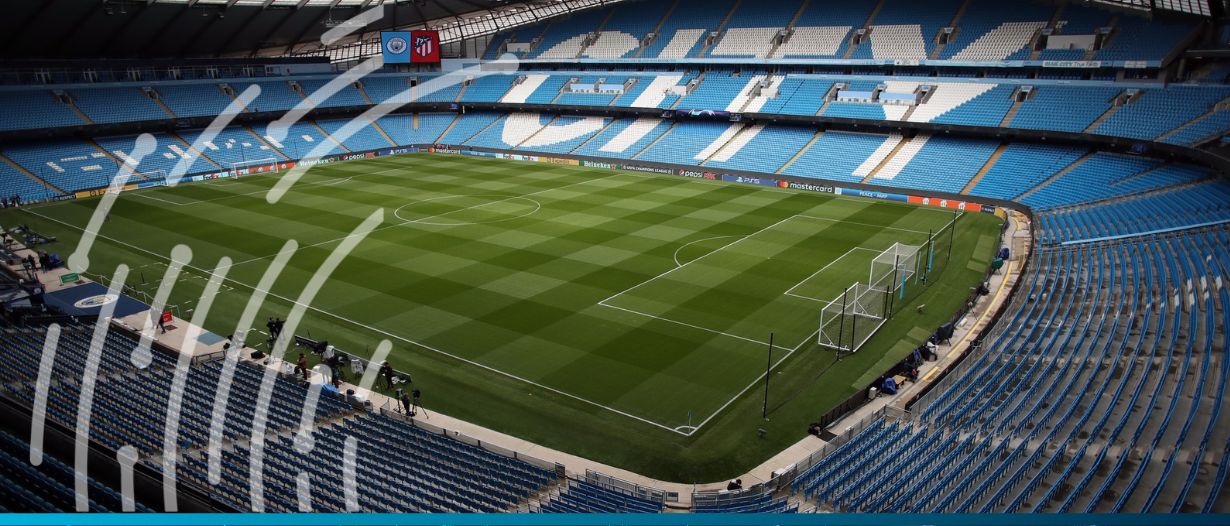Estimated reading time: 9 minutes
Listen to this podcast on Spotify, Apple Podcasts, Podbean, Podtail, ListenNotes, TuneIn
With an estimated 3.5 billion fans around the world, it’s no wonder the finance behind football piques interest, even in the world of trade and receivables finance.
In this podcast, Trade Finance Global (TFG) delved into various facets of trade finance that affect the world of football, including player and receivables finance, project and export finance for clubs, and the ownership and running of football clubs.
Football’s most popular league, the Premier League has grown revenues by 2600% since 1992, but with diverse ownership models and revenue strategies which don’t necessarily complement each other, financial strategies challenge football clubs all around the world.
Trade Finance Global (TFG) spoke with the University of Liverpool’s Football Finance Lecturer Kieran Maguire, also the author of ‘The Price of Football’, exploring the complex world of trade, receivables and working capital finance in football and uncovering the hidden financial workings of the game.
The principles of football club finance
Cash is king.
Football clubs are mostly financially challenged by volatility and unpredictability.
Football clubs get their revenues from three main sources; broadcasting rights, ticket sales and sponsorship deals.
Maguire said, “Broadcasting rights normally pay three or four times a year, leaving erratic cash inflows. Ticket sales, in the case of a Premier League club, may have 40-50,000 season ticket holders, who tend to pay at the same time of year.
Sponsorship deals and commercial income, tend to be on an annual basis, so clubs might be paid once or twice a year.”
With erratic income streams on a month-by-month basis, managing cash flow is difficult. On the contrary, outflows tend to be quite constant.
The main costs to a club are talent-related, in employee remuneration.
“We have some football clubs who are paying out 200% of income in wages alone, so that’s before they put on the floodlights, that’s before they mow the grass, that’s before, even by players, they’re already operating at a significant loss,” Maguire said.
Relegation is one of the most serious risks in football and budgeting.
“If we take a look at the step downs in revenue from relegation in the Premier League, if a club like Leeds or Everton was relegated this season, they could see a drop in income of close to £100 million. The people I speak to in the industry operate with two budgets. One on continuing to be in this division, and one based on a step up or a step-down,” Maguire said.

Trade credit insurance – underwriting transfer fees
Europe’s top five football leagues spent nearly a £1 billion completing over 500 deals in this year’s January transfer window.
Chelsea football club itself spent more money than the Spanish, French, Italian and German leagues put together. But going into more detail, this huge concentration of CAPEX is because the Premier League has the biggest broadcasting rights.
The Premier League broadcasting rights are twice those of Italy, Germany and Spain and four times those of France.
As such, Premier League clubs have large financial commitments in terms of future payments.
Maguire said, “The Premier League clubs collectively, so we’re talking about 20 clubs here, collectively have outstanding payables of £1.8 billion and they have collective receivables of just over £600 million.
We have seen the credit insurance industry become involved as the volume and the value of individual transfer fees has increased.
It is now fairly common that if you do sign a player, that could be spread over three or four annual instalments, simply because even if you are owned by wealthy individuals, that doesn’t necessarily mean that they have access at a day’s notice or a few hours notice to significant funds.”
As with trading companies, the UK Premier League tends to buy from overseas.
Countries such as Portugal remain a major export market for footballing talent and therefore want upfront cash rather than guarantees or delayed payments. This opens up space in the underwriting market for football players and clubs.
Commercial banks versus non-bank lenders – transaction banking services for football clubs
Maguire said, “The likes of Macquarie are very big [in the football financing market], Santander sometimes dip their toes in.
We did have some non-bank niche lenders who appeared to have disappeared from the market.”
Often commercial banks might be hesitant to provide working capital facilities to football clubs, as they are inherently high risk, particularly in the case of relegation.
Maguire said, “Some of the clubs I mentioned to you earlier, the likes of Leeds United, Everton, and West Ham, are not having a good season. We got Southampton down there as well.
Would you be willing to lend to any business as a commercial lender, especially if you are a high street bank, if there was a chance of that club losing its biggest [broadcasting] income stream over the course of the next six months?”
The lender itself could suffer reputational damage, which is why there has been a rise in boutique providers of finance in the industry to provide alternative funding.
However, this often faces controversies and challenges around paying down high-interest debts which can accumulate, in place of shorter-term financing for players.
Maguire said, “If we take a look at the case of Manchester United, since it was acquired by the present owners in an LBO in 2005, it borrowed around about £600 million.
It’s not managed to repay any of the debt.
It did have a listing on the New York Stock Exchange in 2012 which partially paid down some debt, but then it’s continued to borrow since it paid out over £900 million on interest on a £600 million loan.
And the fans get very angry because they feel the money should be spent on facilities for them.”
Future financings, amortization and wizardry
A major cost amongst football clubs is wages, but the second highest cost is often transfer fee amortisation.
Maguire said, “If a club signs a football player for £100 million on a four-year contract, it’s one divided by the other. You end up with an amortisation cost of £25 million a year. You don’t mark to market because there is no market for individual players. They’re trophy assets, they’re the equivalent of a work of art. Therefore, we tend to go down the straight-line amortisation route.
But what we have seen, because lots of people have queried the amount of spending by Chelsea football Club under their new ownership, is they’ve said, well, if we just use straight-line amortisation, let’s sign the players on targets and contracts in terms of the amount of time involved. We’ve got players on eight-year contracts, so that same £100 million player works out as an amortisation cost of £12.5 million.
From a cash flow point of view, it’s completely irrelevant because it’s actually the installments which are due in respect of that transfer, which have an impact on cash flow.
But in terms of satisfying the cost control measures [set out by UEFA], it has allowed Chelsea to spend considerably more money than people would have anticipated and stay within the parameters of the allowable loss model that we have in existence at present.
One of the issues of perhaps using an EBITDA-based metric adjusted for cash commitments is one which I personally favour of the football authorities.”

Project and export finance for building new stadiums – cheap money?
Football stadiums are costly CAPEX projects for clubs. Longer-term project and export finance facilities can often facilitate the building of such stadiums.
In the case of London-based club Tottenham Hotspur had a very low risk of relegation.
Maguire said, “Tottenham were able to go to the external market; they were able to go to DCM and raised somewhere in the region of £700 million at a 2.5-3.75% interest rate. Some of those loans are not repayable until 2051.”
This long-term project and export finance facility would also have derisked volatility in terms of interest rates, as the club purchased fixed-rate coupons.
As confidence in football as an industry has grown over the course of the last two decades, the industry risk for the elite clubs has decreased significantly, and now clubs can borrow at 2-3%, very much considered as ‘safe’ assets.
Maguire said, “In the case of Everton, things are slightly more complicated.
Everton is not one of the elite clubs. It avoided relegation last season on the last day of the year.
Therefore, trying to get individual corporate lenders to lend under those circumstances is more difficult and therefore we move into owner loans and owner funding, which is quite common within the football environment.
At Leicester football club, the owners put in £400 million, Brighton saw owners put in over £300 million.”
Owner loans are a standard way of funding a football club for two reasons.
First of all, there is a lot of caution by traditional DCM markets in relation to lending to a volatile industry. Secondly, the interest costs can be quite high.
NFTs and blockchain – the future of football financing?
There are many rumours about the potential for new technologies to support football club financings, including digital assets via nonfungible tokens (NFTs), and blockchain for merchandising.
Maguire said, “We are seeing football clubs get into bed with a variety of new digital asset companies, the likes of Liverpool, Arsenal, Paris, Sanjaman and indeed the Premier League itself are trying to create a set of digital assets NFTs.
There’s also one club in the fourth tier of English football called Crawley Town, which has been acquired by effectively a crypto company.
They are trying to make Crawley Town the Crypto Club and to attract interest from a variety of geographical locations to people who wouldn’t necessarily engage.”
However, with the unregulated and volatile nature of NFTs, a cautious approach should be taken.
Maguire said, “[NFT’s are a] highly volatile and easily manipulated market and it can be therefore used nefariously by clubs in terms of their objectives. It’s already a very expensive business being a football fan if you’ve got a season ticket or buying merchandise.”
Cash is (still) king
CFOs and treasurers of football clubs, particularly those in the Premier League, face many headwinds and complexities in running their organisations.
The challenges of fluctuating income streams, expensive players, and the constant threat of relegation require a dynamic and strategic approach to cash flow management.
However, there are practical use cases for trade, receivables, project, and working capital finance that can offer much-needed support to clubs.
At the heart of it all, cash remains king, and its efficient management is crucial to the long-term success of any football club.
Therefore, football finance requires a range of strategies, including trade, receivables and working capital finance, project and export finance, and the ownership and running of football clubs.

































